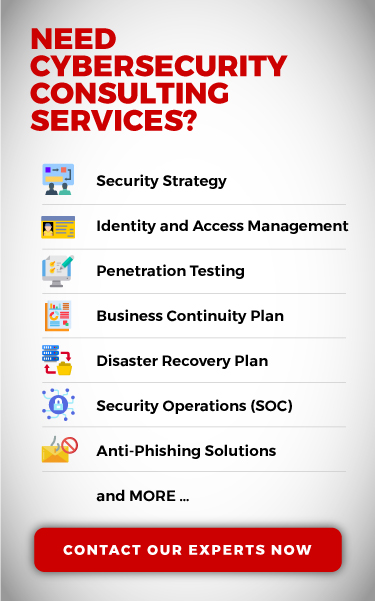Reading Time: 4 minutes
As organizations are adopting new ways to contain the increasing volume of cybersecurity threats and attacks, incident handling has become one of the prominent solutions. It is the process of identifying, investigating, analyzing, and managing security incidents in real time. The method mitigates ongoing security incidents as well as it is capable of avoiding potential cyber threats.
Incident handling requires a combination of tools, knowledge of different domains, and human-driven analysis. The incident handling process gets invoked whenever an incident occurs. After which, the first responders investigate the scope of the incident to devise a plan for mitigation. That is why organizations are not adequately prepared for the fight against cyber attacks until they have an incident handling team onboard. It is the most effective way to contain low-level attacks to massive network security breaches while keeping the recovery cost and time at its minimum. From policy violations to data breaches or any other form of security compromises, all fall under security incidents.
Incident Handling in Five Steps
It is crucial to have an incident handling plan that can take care of multiple security aspects of an IT infrastructure. The ISO/IEC Standard 27035 laid out a five-stage process for the same, discussed as follows:
- Preparation
Be prepared with an incident management policy to deal with multiple forms of incidents. It also demands to have a dedicated team in place.
- Identification
Monitor your security infrastructure for any possible security incidents. If the team comes across any suspicious activity or behavior, report that immediately.
- Assessment
Assess the incident to determine a suitable plan to address the situation. For instance, release a patch for the identified bug in the application or software, or collect digital evidence to resolve the data breach and more.
- Respond
Based on your previous step, respond to the incident with a proper investigation to contain it, and resolve the issue.
- Learn Lessons
Document the key learnings of the entire experience for future use. Also, update your process with the required changes.
How Does Incident Handling Work?
Incident response (IR) is a customized plan that varies from one organization to another. However, all the IR plans still follow a few general steps. The first step of all these IR plans can be “full IT infrastructure scanning” or “in-depth investigation.” Under which, the professional needs to hunt for any abnormality in the system. Anything suspicious should be taken into consideration, even the unusual behavior of authorized users.
Consider an example, a server functioning slower than usual; this is a sign of abnormal behavior. The security team should assess whether the issue is associated with any security incident. In case if it is, the team must further evaluate the infected entity (in this scenario, it is the server). Determine the scope of the attack, collect other relevant information, and build a plan to resolve the incident.
There are times when a security incident needs a public announcement or the involvement of law enforcement. For this, take the necessary steps to handle the issue at hand.
Four Practices for Successful Incident Handling
Despite the size and type of business, every organization needs an incident handling plan. Incorporate the following practices in your plan so that it doesn’t have any loose ends:
- Build an incident handling plan with proper regulatory policies. These supporting policies will guide the concerned team on how to detect, report, analyze, and respond to the incident. Creating a checklist for the planned actions will ease the entire process. Also, updating this plan regularly with the lessons learned would be of great help.
- Build a team dedicated to incident handling and IR (such as CSIRT). The team should be clear about their respective roles and responsibilities. A clear RACI (Responsible, Accountable, Consulted, or Informed) chart will benefit the involved professionals. This chart will have the details of the accountable personnel. Also, the team should have functional roles in other departments, such as legal, finance, business operations, sales, and administration, at the time of crisis.
- A comprehensive periodic training program is an essential element of an incident handling plan. Under this program, clearly, mention all the activities to be performed for the successful incident handling operations. All the involved procedures should be practiced with numerous test scenarios before putting it to use in real time. This program will evaluate the functional, operational, and tactical skills of the team.
- The post-incident analysis is as vital as the entire incident handling process. Once the team has successfully handled a security incident, learn from the failures, and adopt the successful elements. Update the existing incident handling plan, if required.
For the situations needing a collection of digital and forensic evidence, try including below-mentioned practices:
- Draft a suitable policy for evidence collection so that the evidence should be acceptable in the court of law.
- The plan should be flexible enough to employ forensics whenever evidence collection, analysis, investigation, and reporting are considered. Flawed evidence collection can result in substantial damages, and so, it is a compulsion that this specialized function should be performed with undivided attention.
- Appoint professionals with hands-on experience. It would be of great advantage.
Tips for Mature Incident Handling Process
For the proactive incident handling plan, also consider the following tips:
- Have different checklists and templates in place. This step will be useful for operational maintenance response. The team might need to deal with different configurations, which requires separate guides for start-up, shutdown, restoration, and more.
- Report the management and concerned stakeholders regarding financial metrics. The management and stakeholders should be aware of the recovery cost savings and the level of productivity.
- Regularly test and evaluate your IR plan. It’s crucial that you analyze what did and didn’t go well with the existing plan. To check your IR plan, you can start with paper test, tabletop exercises, and simulated attacks.
- Under the paper test, check the documentation if there are any discrepancies or some step or some other detail is missing.
- As per tabletop exercises, stakeholders run through several incident scenarios to review and practice actions defined in the plan.
- A fully simulated attack brings the team closer to real-world situations. It helps the team to understand their roles as well as the procedures to carry out their responsibilities.
A sound and robust incident handling not only reduces the recovery cost and time but also contributes to lowering the potential liabilities and minimizing the damage to the organization. For all of this to happen correctly, organizations need to have all the necessary tools to alert, analyze, and mitigate the incident.





